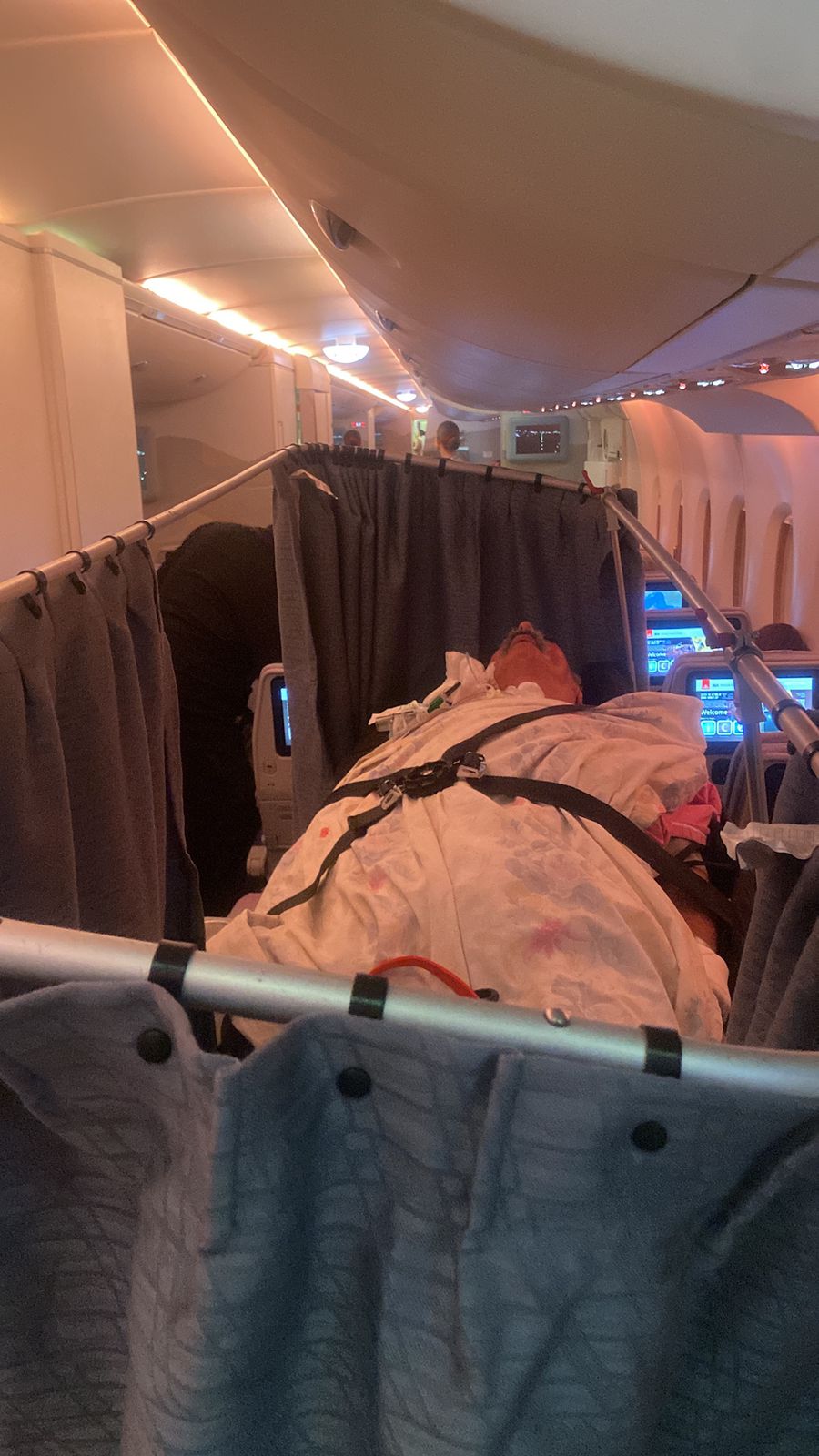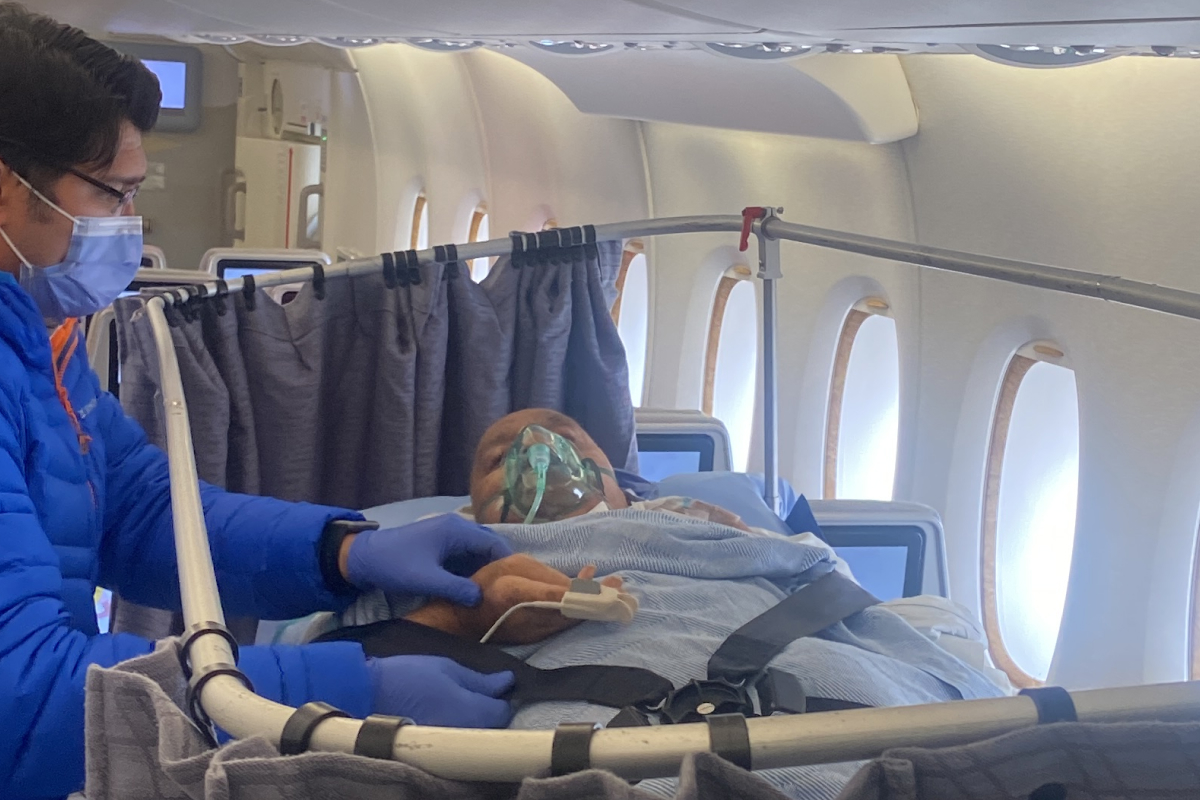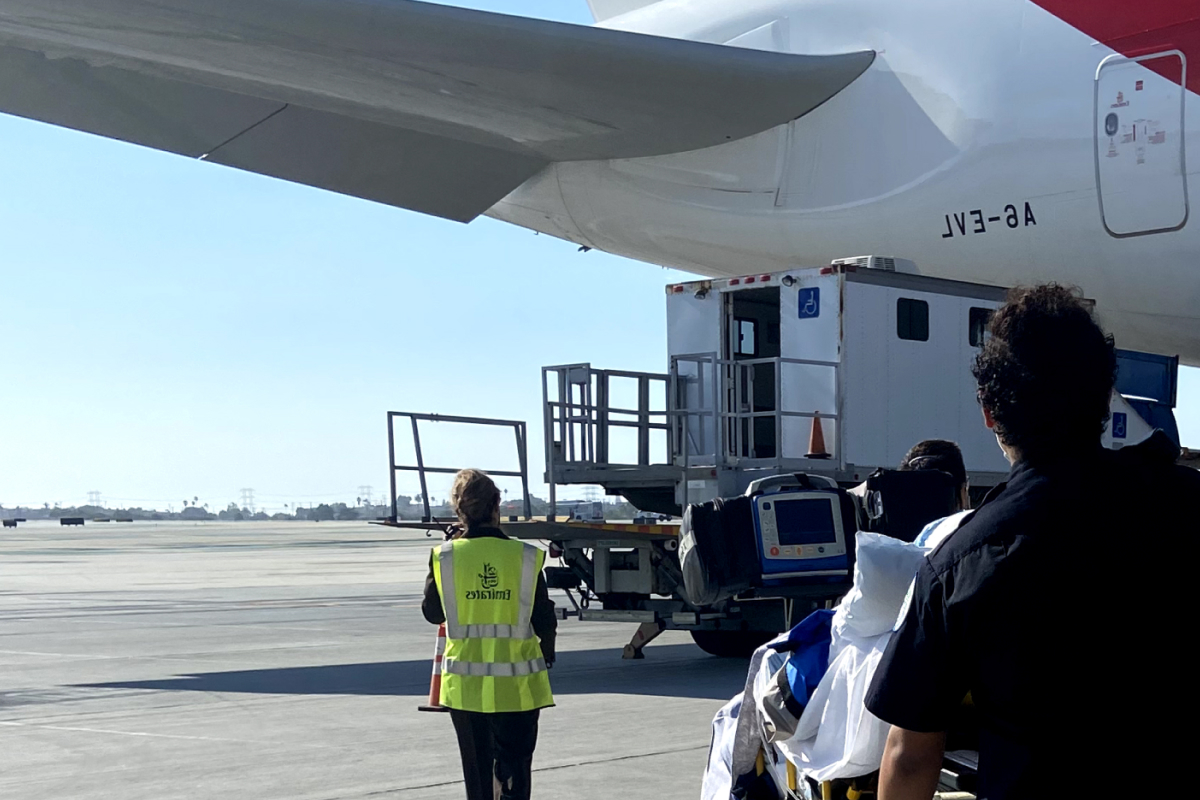Presented by Dr. Ashok Kumar
Step 1: Patient Assessment and Communication
- Evaluate the patient’s medical condition.
- Establish communication between the treating doctor, receiving doctor, and transporting doctor to understand the patient’s status, ongoing treatments, medical equipment requirements, oxygen needs, comfortable posture, and any special advisories.
Step 2: Coordination with Logistics Team
- Collaborate with the logistics team to select an appropriate airline for the transport.
Step 3: Completion of MEDIF Form
- Obtain and complete the airline’s Medical Information Form (MEDIF), which requires the treating doctor’s signature and stamp.ashokarescue.com
- This form is essential for securing medical clearance from the airline.
Step 4: Compilation of Required Documents
- Gather the following documents:
- Medical historyen.wikipedia.org
- Latest vital signs
- Recent investigation reports (blood tests, X-rays, MRIs, CT scans, ABG)
- Fit-to-fly certificate, duly signed and stamped by the treating doctor
- Medical historyen.wikipedia.org
Step 5: Receiving Hospital Permission and Ground Ambulance Arrangements
- Secure a permission letter from the receiving hospital.
- Arrange ground ambulance services at both the departure and arrival locations.

Step 6: Ventilator Settings (If Applicable)
- If the patient requires a ventilator, provide detailed ventilator settings and oxygen requirements to the airline.
Step 7: Selection of Transport Mode
- Choose the appropriate mode of transport: commercial stretcher, business class, or air ambulance, based on the patient’s condition and airline policies.
Step 8: Airline Approval
- Submit the MEDIF form, fit-to-fly certificate, and medical documents to the airline for approval.
- Await confirmation from the airline regarding the arrangement of the stretcher, business class accommodations, medical assistance, and oxygen requirements.
Step 9: Ground Ambulance Coordination
- Ensure that standard ground ambulance services are arranged at both the departure and arrival airports, including any transit airports if necessary.
Step 10: Transit Medical Unit (If Required)
- If the patient requires medical supervision during transit, arrange for a transit medical unit in advance.
Step 11: High-Lift Equipment
- Coordinate with the airline to arrange high-lift equipment at the departure, transit, and arrival airports to facilitate the transfer of the patient from the ambulance to the aircraft stretcher and vice versa.
Step 12: Ticket Booking
- After receiving approval from the airline and medical team, proceed with booking the flight tickets based on seat availability.
- Obtain the Passenger Name Record (PNR) number from the airline.
Step 13: Arrival Time at Airport
- Ensure that the patient arrives at the airport at least 3 hours before the scheduled departure to allow ample time for check-in and security procedures.
Step 14: Coordination with Airline Authorities
- Coordinate with the airline’s airport authority manager to arrange for entry passes for the ground ambulance to access the airport tarmac area.
Step 15: Patient’s Medical Feed
- Ensure that the patient’s ongoing medical feed (e.g., intravenous fluids, medications) is provided throughout the journey and is carried by the patient from the hospital.
Step 16: Ashoka Rescue Air Ambulance Services
- Ashoka Rescue offers comprehensive logistics for seamless, safe, and professional medical evacuation with bed-to-bed services.
- For inquiries or assistance, contact:
- Phone: +91 9810 364143
- Email: ashokarescue@gmail.com
- Phone: +91 9810 364143



